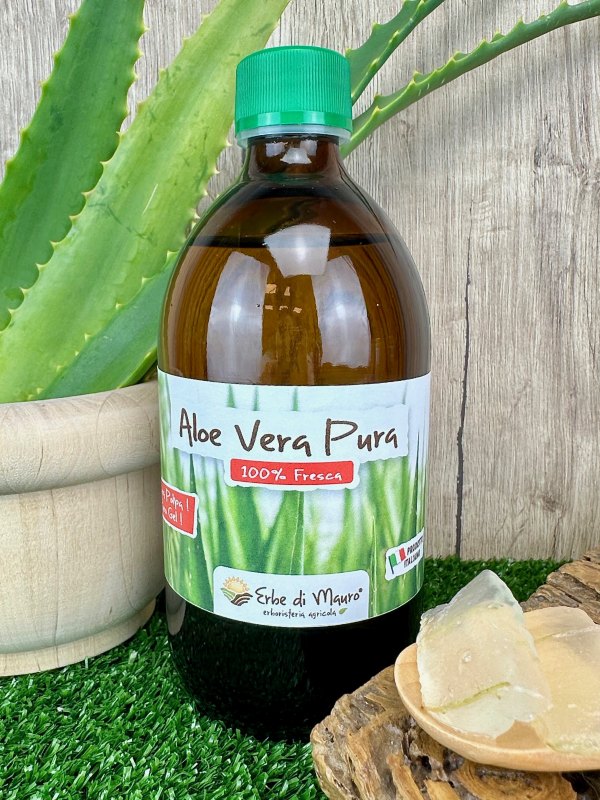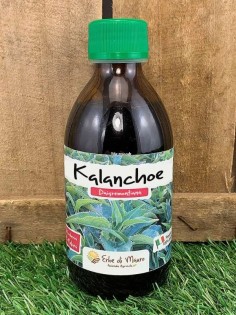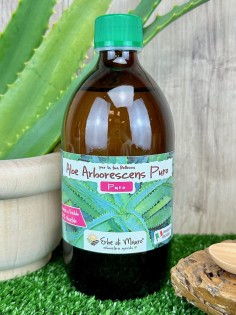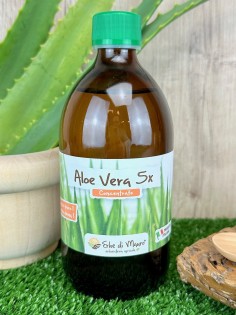GET A 10% DISCOUNT VOUCHER
Pure Aloe Vera, cold extracted pulp, 500ml
 13 Number of reviews:
13 Number of reviews:
Description
![]()
![]()
![]()
![]()
![]()
![]()
![]()
![]()
Imagine that you are extracting aloe gel from a leaf yourself. This is a product that has the same consistency as an extracted and squeezed gel as it is in nature. The always fresh leaves are harvested in our land and immediately processed in our laboratories, to then be sent to your home.
- Ingredients: 99.55% Aloe Vera, 0.3% Rosehip extract, 0.15% mix of essential oils.
- Product grown by our company!
- The product is a little liquid, a little with the natural mucilage of the plant
- Upon arrival of the package, the product must be kept in the fridge
- Best before 180 days from production date
- 500ml glass container
- NO-GMO, gluten-free, preservative-free, alcohol-free, unpasteurised.
Our cultivation of Aloe Vera
Characteristics
This product is made by hand peeling the leaves and cold squeezing the Aloe Vera gel. The leaves are harvested directly from our plants, grown in a 100% natural way on our land located in the hills of Fermo (Marche). It is a unique composition in Italy, without chemical preservatives and without pasteurization.
How do I prepare Aloe juice
- This is a product made shortly before shipping.
- The plants are grown on the ground, in a natural way and in the open countryside in the Marche hills of Fermo.
- All Aloe Vera plants, from which the leaves are harvested, are over 9 years old.
- The collection of Aloe leaves is done only on plants that have not been irrigated for at least 6 days.
- The leaves are hand-picked just before dawn, then cold-processed in the dark in our laboratory.
- Our Aloe-based products are 100% natural and contain no preservatives.
USE: raw material for technical use
Curiosity
Aloe has been used extensively in many parts of the world for cosmetic and medicinal purposes for thousands of years. The first evidence of the use of Aloe comes from ancient Egypt and Mesopotamia, where it was called "the plant of immortality", in fact it was also used in the mixtures used for mummification (probably due to its natural antioxidant effect). We then move on to Hippocrates (460-337 BC), father of current Medicine.
In his numerous medical books he praises its healing properties. Discorides (20-70 AD) talks about it in the "De materia medica", listing the properties of Aloe as healing, anti-inflammatory and useful in skin infections. Pliny the Elder , in the treatise "Historia Naturalis", describes the therapeutic properties of Aloe .
It is also mentioned in several passages of the Bible: in the book of Numbers, in the Song of Songs and in the Gospel of St. John (19.3) as a component of the mixture used to anoint the body of Jesus after the descent from the cross. Tibetan medicine compared to Ayurvedic medicine is still used today for their preparations. The Templars used aloe as an ingredient in a special drink they called the "Elixir of Jerusalem".
In the Middle Ages and the Renaissance, the medicinal use of aloe spread to the northern regions of Europe. Christopher Columbus, who went down in history as the "explorer of the New World" in one of his writings declares that four plants are indispensable for man: wheat, vines, olives and aloe. The first nourishes, the second rejoices, the third gives harmony, and the fourth gives health. As you can see, the relationship between Aloe and human beings is rooted in the mists of time and is not the latest news of the moment.
SUCCO_POLPA_ALOE_VERA
750 Items
New
Max

11/29/2024
Bravissimi come al soito
Super azienda.....
simodeluca

08/29/2024
Aloe vera pura
Prodotto top!
Giusy

08/12/2024
Validissima
Davvero valida, ne ho provate diverse negli anni, poi un caro amico me l'ha consigliata, grata del consiglio, sicuramente la ricomprerò
Max

05/27/2024
Eccezionale
Prodotto eccellente. Depura sicuramente stomaco e intestino. Bravi ragazzi, continuate così e puntate sulla qualità
Federica P.

05/13/2024
Ottimo e freschissimo
Valutazione eccellente
Andrea P.

05/03/2024
Serietà
Ho avuto un problema con la spedizione e dopo aver contattato il produttore le erbe di Mauro mi hanno rispedito il materiale senza alcun pagamento veramente molto seri e gentili i prodotti poi sono eccezionali Consigliatissimo
Giada P.

04/12/2024
Perfetta qualità
perfetta qualità, grazie
alessandro S.

02/02/2024
Aloe vera pura
Prodotti eccellenti come sempre.Serietà e competenza TOP
Emilio R.

01/05/2024
ottimo
tutto perfetto: prodotti, assistenza, spedizione
Maurizio S.

12/18/2023
Aloe vera
Questa la prendo per acidità e reflusso fa bene
ultrasuoni U.

06/30/2023
Aloe Vera Pura, polpa estratto a freddo, 500ml
altissima qualita
Daniela P.

04/17/2023
Polpa di aloe vera
Utilizzo questo prodotto quasi per completare l’Alie concentrato e ribadisco, anche in questo caso le ottime proprietà e benefici apportati
Antonio B.

02/14/2024
Top
Veramente TOP polpa estratta a freddo, buona e salutare, si può unire a succo puro di Mirtilli, la bottiglia in vetro è eccezionale, pacco e spedizione ultra rapida. Grazie di cuore a Erbe di Mauro














